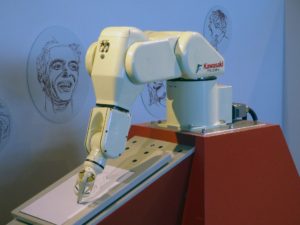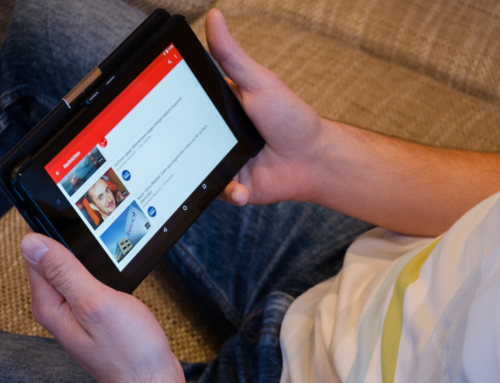By Beata Socha
Source: Warsaw Business Journal, Number 11/12 (49), November/December 2018
They are programmed to perform multiple tasks and at far greater speed than a human. They do repetitive tasks and never complain. Soon we will all have robots working side-by-side with us, many of them as our personal assistants.

Business is now all about robotics. They first appeared 4-5 years ago but the trend reached Poland only last year. “Today, business is dominated by robotics, we can definitely talk about a boom here,” said Nina Twardowska, CEO of Impel Business Solutions. The company already employs 30 fully automated processes and another 50 concepts are in line for implementation.
Few people need convincing how much robots can do for a business. They are 100 percent accurate, they work 24/7 and don’t complain when doing the same repetitive things over and over again. All that translates into financial gains.
Robots can already do a lot. They can search through PDFs and websites for information. They can e.g. easily sift through entire news archives in PDF format and generate a report with the relevant information. They can read and create documents, help with HR and accounting, even with social insurance filings. They can work anywhere without limitations – as long as they get digital records.
Create your own robot

How do you create such a helpful assistant? It’s easy enough for an IT developer to write a set of rules that will ultimately imitate the activities of a human. You can easily create a robot that will log into a bank account every morning, download a bank statement and save it in a designated place. All it needs is a set of instructions: “Go to this account every morning, select all data for bank transfers and save the information of how much money has been paid out to desktop or send an email or text message with the information. Finally, send a notification that the task has been completed.”
In a large company that handles accounts, you go through thousands of bank statements each with hundreds of records. A robot settles all of them, unless it encounters a problem. That’s when it notifies an employee about the items it was unable to complete. “Then a human employee has to look at the problem and figure out why the error occurred. With all the freed-up time, the employee can improve their skills and specialist knowledge rather than copying and transferring data for most of the day,” explained Twardowska.
“After all, who is a better specialist: a person who processes 150 documents a day without paying too much attention to their contents, or a person who analyzes three and assesses the risks associated with them?” she added.
What about us?

All the progress in robotics seems to reinforce the oft-repeated question: will they someday replace all of us in our jobs? The short answer is: probably most of us. But not in the nearest future. We are at a stage where robotics is all about humans working together with machines. It is us who provide the stimuli for robots to act. It is still us – at least for now – who make decisions. Of course, at some point robots will learn to make decisions too. Robotics and automation are developing incredibly quickly.
“We can already see the first attempts at combining robots with Artificial Intelligence. Based on a number of repeated activities, the robot will be able to adjust its course and learn simple things. It will have two-three options to choose from and will select the best one,” Twardowska stated.
Only a few years ago, stores were cautiously introducing self-service checkouts as a cost-saving measure. With Sunday trading increasingly problematic, labor costs shooting up due to overwhelming shortage that no migration surplus can solve, retailers are open to any and all technologies that will give them the upper hand. The Żabka chain has recently unveiled its AI-filled “store of the future.” And though its CEO states that people won’t be replaced entirely, he admits the number of cashiers will be lower in the future.
Personal assistants and co-bots

In the not-so-distant future, almost every single office employee, regardless of their position in the corporate structure, will have an assistant, something that thus far has been reserved for top-level management. That is of particular significance to people working in accounting, HR and logistics. It will be possible because employing another assistant will bear negligible cost, as they will all be robots. “People delegate to robots tasks such as: sending emails, copying data, filing sick leave etc. We are headed for a work environment where every employee that can prove that a robot assistant would help them save time and become more efficient and creative in their work will be able to get one,” claimed Ewa Piotrowska, sales director at Impel Business Solutions.
Some call them robotic personal assistants, other call them co-bots – as in robots collaborating with people. It is their cognitive functions that make them different from machines we already use in factories. They can interpret, make predictions and imitate human behavior, learning by observing us perform repetitive tasks. For production managers their ability to learn is a real breakthrough, as they will be able to save on costly programming. “We are entering a new dimension of automation, where robots will work hand in hand with humans to an extent never seen before. Opportunities thus far only available to the biggest players will become accessible to small and medium-sized companies. This is thanks to the synergy between several technologies, including cloud computing and Artificial Intelligence,” said Piotr Rojek, CEO of DSR, an IT firm.
Robotics is undoubtedly changing companies, and the economy itself. Working with robots will require a new, expert set of competencies. “People want to work in a flexible environment and they value work-life balance. Robotics makes that easier. We will become the creators of solutions based on new technologies. We will no longer need to adjust to what is available on the market,” Twardowska stressed.
Glossary
- in line for – oczekujący na
- to sift through – przekopywać się przez
- freed-up time – uwolniony czas
- stimuli (l.m.)/ stimulus (l.p.) – bodźce/ bodziec
- cautiously – ostrożnie
- overwhelming – przytłaczający
- surplus – nadwyżka
- the upper hand – przewaga
- to unveil – ujawnić
- thus far – dotychczas
- negligible cost –nieistotny koszt












